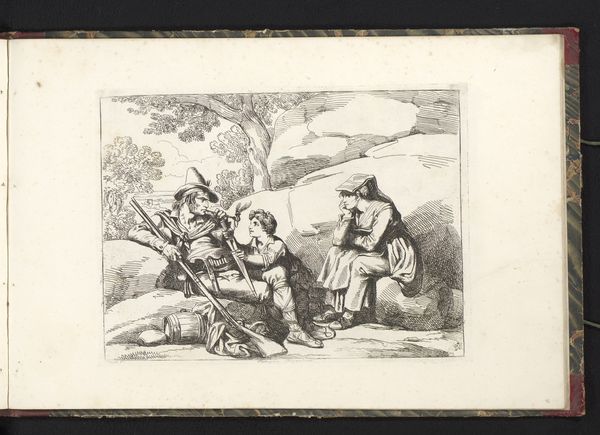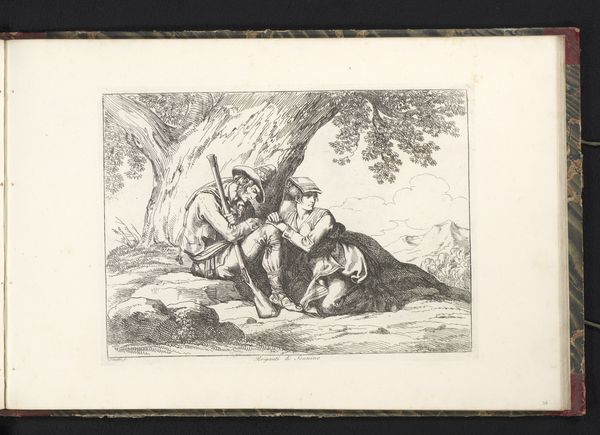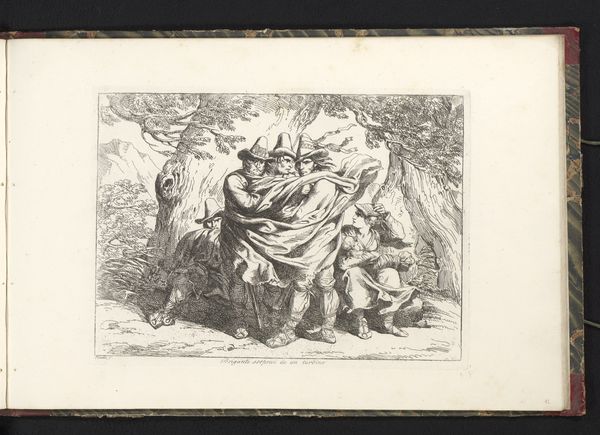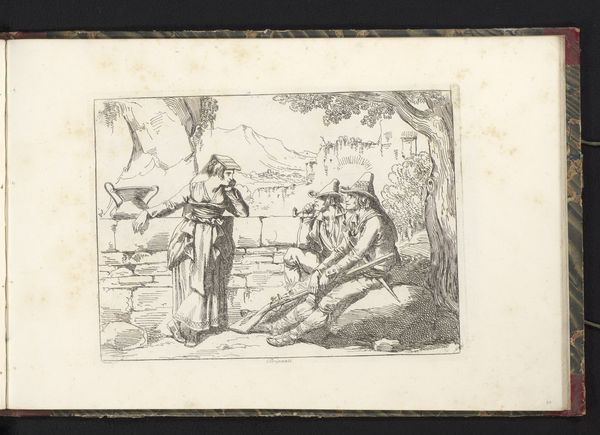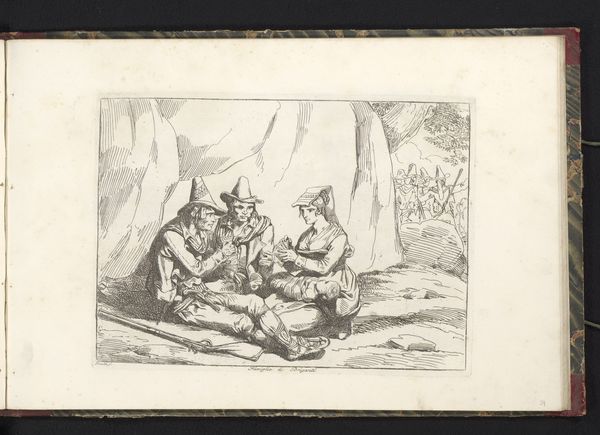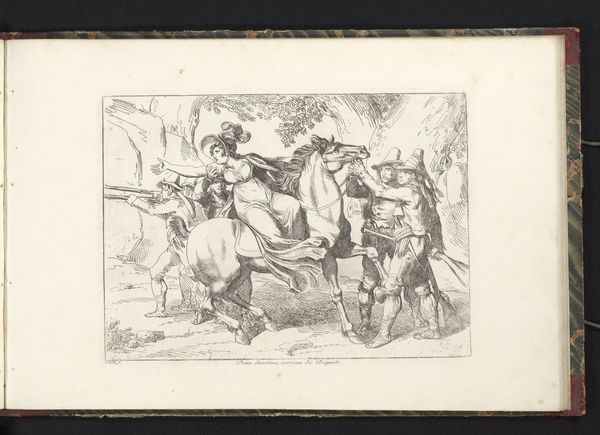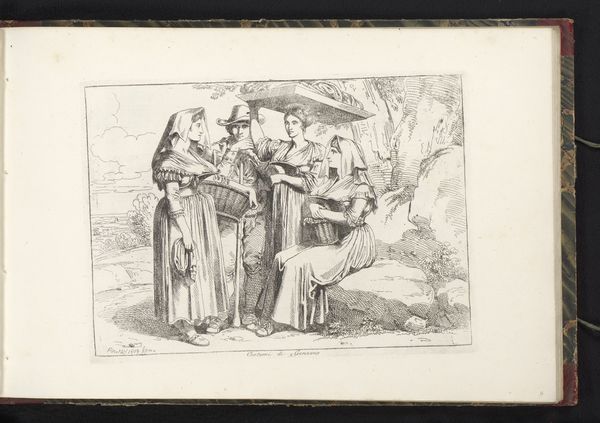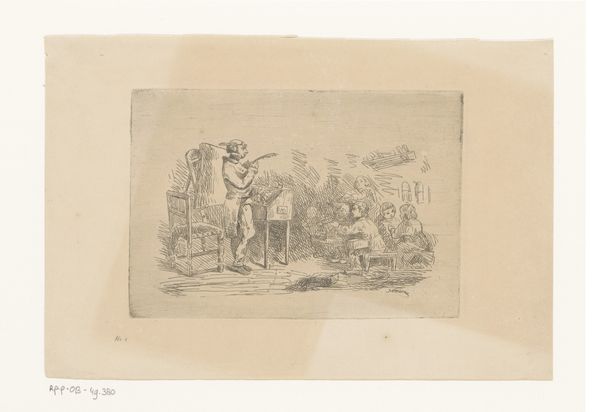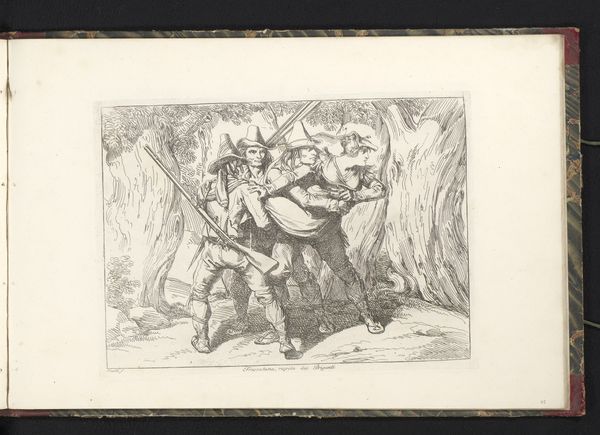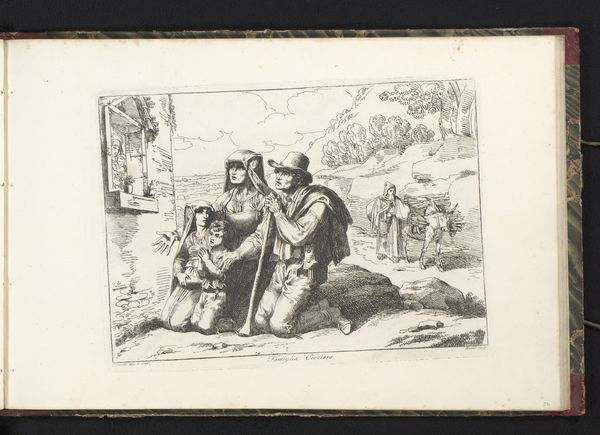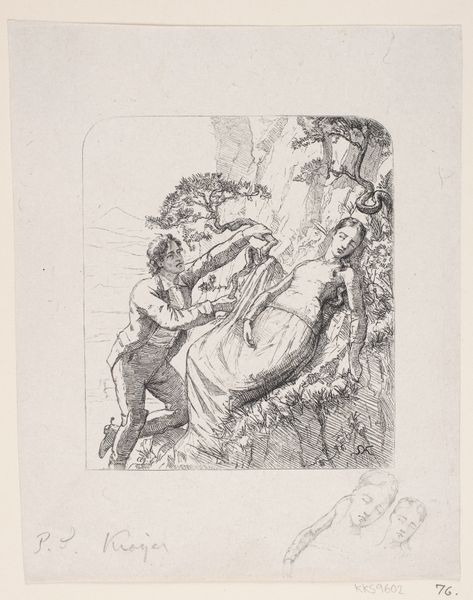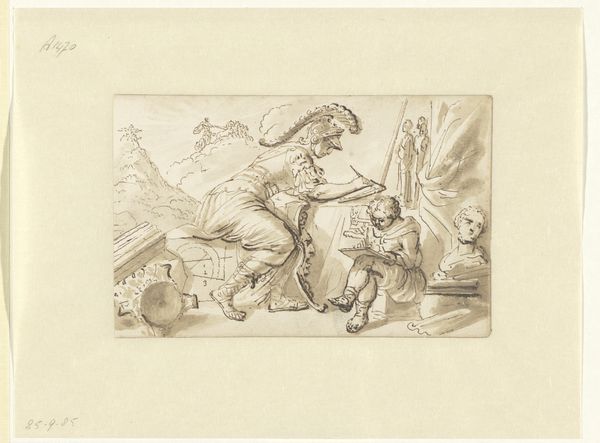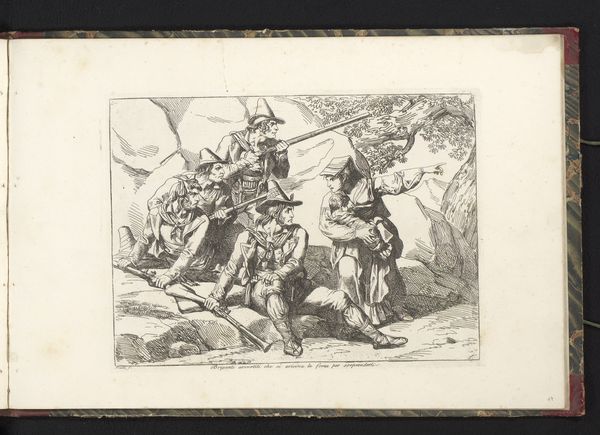
drawing, ink, pen
#
portrait
#
drawing
#
aged paper
#
toned paper
#
sketch book
#
landscape
#
figuration
#
personal sketchbook
#
ink
#
romanticism
#
pen-ink sketch
#
pen and pencil
#
sketchbook drawing
#
pen
#
watercolour illustration
#
genre-painting
#
sketchbook art
#
watercolor
Dimensions: height 204 mm, width 275 mm
Copyright: Rijks Museum: Open Domain
Curator: Let's take a look at "Rustende bandieten," or "Resting Bandits," a pen and ink sketch with watercolor, by Bartolomeo Pinelli, created sometime between 1819 and 1823. It looks like it's part of a personal sketchbook. Editor: Hmm, the quiet tenderness in the mother and child group jars a bit with the brigand relaxing nearby with his weapon. Makes me wonder about the nature of protection, doesn't it? Or maybe forced rest? Curator: Indeed. Pinelli, known for his prints depicting Roman life and customs, often blurred the lines between idealized Romantic visions and the harsh realities of everyday existence, particularly in the Italian countryside. He was quite prolific in portraying folk costumes too, like this character’s garb. Editor: You see it too, that sense of the Romantic...The sweeping landscapes hinted at behind them feel immense, promising something both beautiful and treacherous, which heightens the tension for me. I keep thinking about who "owns" the process to create images: a lone artist's vision or their patrons. And is the bandit really resting or on guard? Curator: A fair question to be sure! The sketch itself reveals much about Pinelli's artistic process. We can see the rapid, almost nervous linework, suggesting that he might have been capturing a fleeting moment, perhaps sketched from life or from memory. Editor: Capturing fleeting moments while engaging with power...it seems that many artists are complicit with power in this way...or is that reductive of me to suggest? And, this drawing, for all of its darkness in tone...also gives off this beautiful aura. A visual haiku. Curator: I agree with your sentiment, and find this artist a beautiful, complicit poet. But I see the material production, too: the choice of paper, the ink, the decision to add watercolor washes—each element contributes to the work's meaning, its engagement with the art market, the means of cultural reproduction... Editor: Precisely! I wonder how many other versions of this scene might have existed in Pinelli's mind or sketchbooks. Each variation subtly altering our perceptions. A conversation between the artist, their world, and the marks they made. Curator: Fascinating, thank you. Well, I will continue pondering this piece through my perspective on materiality. Editor: I'll be over here in my "sketchbook of bandit dreams," should you need.
Comments
No comments
Be the first to comment and join the conversation on the ultimate creative platform.
